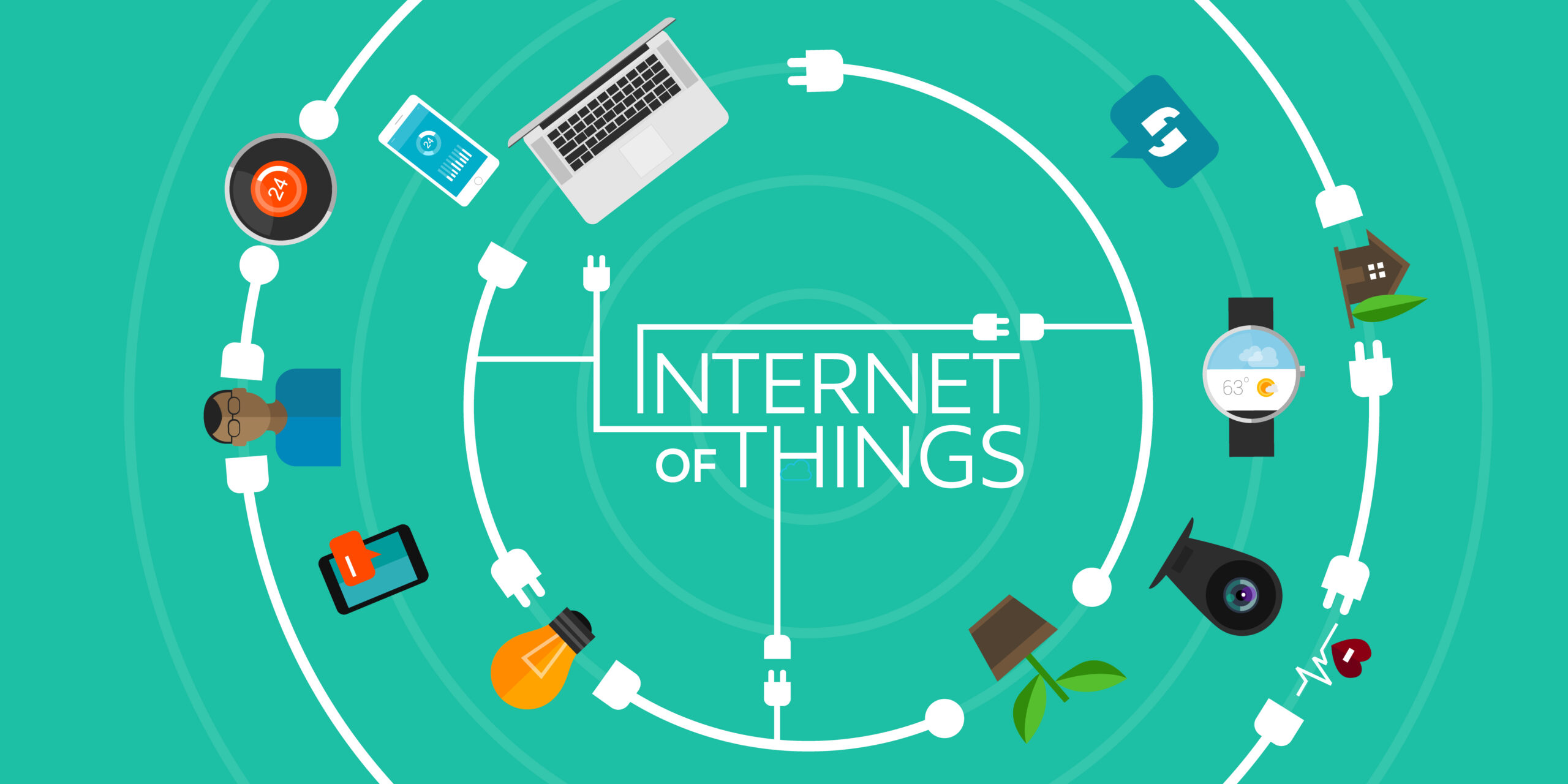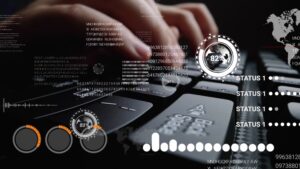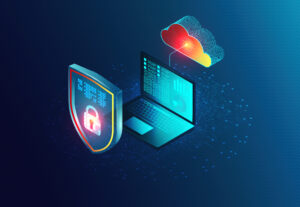You are on the cusp of a new industrial revolution. The Internet of Things is transforming enterprises through connected efficiency as sensors, devices, and analytics software unite to optimize operations. This seismic shift brings intelligent automation to the factory floor, the supply chain, and beyond. Join us as we explore how IoT is driving the next wave of industrial advancement. We will examine critical use cases and provide actionable insights to help you capitalize on the promise of a more connected, insight-driven enterprise. The machines are talking to each other, work is becoming smarter, and productivity is reaching new heights. The future is here. IoT’s industrial revolution has arrived.
1. The Promise of IoT for Enterprise Operations
Optimized Productivity and Efficiency
The IoT connects devices, sensors, and systems across an enterprise, generating data that provides insights into operations and facilities. This data enables you to optimize productivity, reduce inefficiencies, and streamline processes. For example, sensors on manufacturing equipment can detect when a machine needs maintenance, allowing you to schedule service and avoid costly downtime. Logistics companies can track assets and shipments in real-time, enabling dynamic routing and scheduling to improve delivery times.
Enhanced Visibility and Monitoring
IoT systems give you unprecedented visibility into your enterprise operations. Connected sensors monitor the status and performance of equipment, infrastructure, and assets in real-time. For utilities, smart meters track energy usage to optimize the grid, while sensors monitor infrastructure like pipelines. Manufacturers can monitor air quality, temperature, vibration, and other factors to ensure quality. This data provides alerts to potential issues, allowing for proactive maintenance and risk mitigation.
Improved Safety and Security
The IoT also enhances safety and security across an enterprise. Connected sensors can detect anomalies like leaks, spills, or unauthorized access. Video monitoring using IoT-connected cameras provides additional security. For hazardous work environments like mining, IoT wearable devices can track health metrics and the location of personnel in case of emergency. The data from these systems allows you to identify and address threats promptly before they become catastrophic events.
The IoT is poised to transform enterprise operations through connected efficiency, visibility, and safety. While implementing an IoT system requires investment, the potential benefits to productivity, cost savings, and risk reduction make a compelling business case. The enterprises that adopt IoT solutions will gain a significant competitive advantage in the coming decades.
2. Key Industrial IoT Applications Transforming Business
Optimized Operations Management
- Industrial IoT (IoT) systems provide data that offers unprecedented visibility into operations. Sensors and connected devices generate real-time insights into equipment performance, resource usage, and workflow efficiencies. Analytics tools can then identify opportunities for improvement and optimize key performance indicators. For example, manufacturers can minimize downtime by predicting equipment failures and scheduling predictive maintenance. They can also optimize energy usage, material flows, and staffing levels based on production schedules and demand forecasts.
Enhanced Productivity
- Connected sensors and automated systems increase productivity through automation and intelligent orchestration of processes. In manufacturing, IoT-enabled robots and robotics streamline assembly lines. In logistics, automated material handling systems transport goods efficiently through warehouses and ports. Utilities can remotely monitor infrastructure and automatically re-route resources as needed to prevent service disruptions. By automating mundane and repetitive tasks, these IoT systems allow human workers to focus on higher-level thinking and value-added activities.
Improved Safety
- IoT applications also help minimize risks to workers, equipment, and the environment. Connected sensors can detect abnormal operating conditions and trigger alerts before failures or accidents occur. Video monitoring using AI can identify unsafe behaviors or unauthorized access. In hazardous work environments, wearable sensors provide location tracking and vital sign monitoring to ensure worker safety. Predictive analytics even enable some companies to pre-emptively repair or replace equipment components before they become safety issues.
By leveraging data from IoT devices and systems, enterprises are achieving new levels of efficiency, productivity, and safety. As more processes become automated and intelligent, the benefits of this industrial revolution will only continue to grow.
3. Real-world examples of IoT Optimization

A. Manufacturing Optimization
- For manufacturers, IoT connections offer significant opportunities to optimize operations and reduce waste. Manufacturers gain visibility into the entire production lifecycle by embedding sensors in equipment, processes, and inventory. This data enables predictive maintenance to avoid unplanned downtime, as well as the optimization of machine settings and routines.
- For example, Bosch uses IoT systems to monitor high-precision manufacturing equipment closely. By analyzing sensor data, Bosch can detect subtle changes in vibration, temperature, and other metrics to anticipate needed maintenance. This prevents unplanned downtime that could slow or halt production. IoT-enabled predictive maintenance has reduced Bosch’s maintenance costs by up to 25% and increased some equipment lifespans by up to 20%.
B. Logistics Management
- Logistics companies are leveraging IoT technology to gain end-to-end visibility into the journey of goods through the supply chain. By connecting vehicles, packages, warehouses, and more with sensors and tracking systems, logistics companies can monitor shipments’ location, condition, and status in real-time. This data helps to optimize routing and resource allocation to maximize efficiency.
- UPS uses IoT systems to track millions of daily shipments in its warehouses and delivery vehicles. With connected handheld devices, UPS drivers can automatically capture details on each delivery and pickup to enable optimal routing. In UPS facilities, movement sensors, RFID tags, and other IoT technologies track packages through the sorting systems to prevent delays and keep shipments flowing efficiently to their final destinations.
C. Utility Monitoring
- IoT connectivity provides insights for utility companies to better manage resources and prevent service disruptions. Smart meters, sensors, and automation allow utilities to monitor infrastructure closely, optimize performance, and detect issues early. This connected intelligence helps utility companies improve sustainability and reliability.
- Many energy companies deploy smart meters and grid monitoring systems as an example. These IoT solutions provide real-time data on energy usage, which helps utilities to adjust output to meet demand efficiently. They can also detect signs of equipment failure or overload to dispatch crews for preventative maintenance before outages occur. With IoT optimization, some utilities have achieved 10-15% reductions in outage durations and costs.
4. Implementing Industrial IoT: Challenges and Considerations
Device Interoperability
- For Industrial IoT systems to function optimally, the various connected devices must be able to interoperate and communicate with each other seamlessly. However, the reality is that devices from different manufacturers often utilize proprietary technologies and standards, hindering interoperability. Enterprises should evaluate devices based on open standards to ensure maximum interoperability and flexibility. Open standards also future-proof systems by facilitating integration with new technologies.
Data Management
- Industrial IoT systems generate huge volumes of data that must be collected, stored, processed, and analyzed efficiently. Enterprises need a robust data management infrastructure with sufficient storage and computing power. They also require analytics tools to derive actionable insights from the data. Proper data governance and security policies are essential to managing data ethically and protecting critical infrastructure.
Cybersecurity
- With more connected devices comes a larger attack surface for cyber threats. Industrial IoT systems contain sensitive data and directly control physical equipment, making them an attractive target. Enterprises must take a layered approach to security, integrating measures like authentication, encryption, and firewalls to protect devices, networks, data, and applications. They should also implement security monitoring to detect anomalies and emerging threats.
Legacy Technology Integration
- Most enterprises have existing infrastructure, equipment, and OT systems that predate IoT technologies. Integrating new connected devices and software with legacy technology can be challenging. Enterprises may need to update legacy systems or install middleware to enable integration with modern IoT platforms. They should take an incremental approach, starting with minor upgrades before transitioning fully to new systems. With proper planning and staged upgrades, enterprises can benefit from IoT without disrupting existing operations.
In summary, by carefully considering device interoperability, data management, cybersecurity, and legacy integration, enterprises can implement Industrial IoT systems to optimize operations in a secure and scalable manner. With the right strategies and solutions in place, organizations in manufacturing, utilities, and logistics can unlock new efficiencies and a competitive advantage using IoT.
5. FAQs: Revolutionising Enterprise Operations With Industrial IoT
i. What Is Industrial IoT?
Industrial IoT (IoT) refers to using connected sensors, instruments, and other smart devices to enable automation across enterprise operations. IoT connects physical industrial equipment and other assets to the internet, allowing for data gathering, monitoring, and analysis. This connectivity gives enterprises greater visibility into their operations, enabling optimized productivity and efficiency.
ii. How Does Industrial IoT Transform Operations?
IoT enables enterprises to gain valuable operational insights through data analysis, allowing them to optimize processes. Connected sensors and smart devices generate data on assets and processes. Analyzing this data provides insights into areas of waste, inefficiency, and sub-optimal performance. Enterprises can then implement data-driven improvements to enhance productivity, reduce costs, and minimize downtime.
iii. What Are The Benefits of Industrial IoT?
The benefits of IoT include:
- Improved productivity and efficiency. Data insights enable streamlined processes and automation.
- Reduced costs. Data-driven improvements cut waste and minimize resource usage.
- Predictive maintenance. Analytics detect anomalies to predict equipment failures and enable proactive maintenance. This reduces unplanned downtime.
- Improved safety. Connected sensors and real-time data help identify hazards and enable quick responses, resulting in safer working environments and operations.
- Enhanced customer experience. Data-driven insights into operations and supply chains allow for higher-quality products and services delivered faster and more reliably.
iv. What Are The Risks and Challenges of Implementing Industrial IoT?
While promising, IoT also presents risks and challenges, including:
- Data privacy and security. Connected systems increase vulnerabilities and the potential for cyber threats. Strict data and system security is required.
- Significant investment. IoT solutions often require substantial capital to implement sensors, connectivity, and analytics tools.
- Integration challenges. Connecting legacy industrial equipment and merging IT and OT can be difficult, and compatibility issues may arise.
- Reliance on connectivity. IoT depends on reliable internet connectivity to function. Any connectivity issues will disrupt data gathering and analysis.
With prudent management of these risks, IoT can transform enterprise operations through connected efficiency and data-driven insights. The ‘Industrial Revolution’ enabled by IoT optimizes productivity, reduces waste, and enhances the customer experience.
Key Notes
The Industrial Internet of Things is upon us, promising to revolutionize enterprises, large and small. The efficiencies and insights to be gained are immense. It would be best if you moved quickly and decisively to implement IoT solutions to remain competitive, though not recklessly. A considered, strategic approach will reap the greatest rewards. Success lies in choosing solutions tailored to your needs, not mindlessly following the herd. With clear goals, robust cybersecurity, and a culture embracing change, you can harness the true potential of IoT. The revolution awaits: will you lead it or be left behind? The choice is yours.
More Stories
Android Instant Apps Retired After Years of Low Adoption
Google decides to retire Android Instant Apps by December 2025 as they struggled to capture user interest since its launch in 2017.
Threads Unveils Native DM Test to Break Instagram Dependency
By unveiling a native DM (direct messaging) feature, Threads aims to sever its dependency on Instagram for private communications, a shift poised to redefine how users interact within the platform.
Google Closes Loophole That Let Hackers Bruteforce Your Hidden Phone Number
Recently, Google took decisive action to close a significant vulnerability that could potentially expose users’ hidden phone numbers to malicious actors.
Southern Cross NEXT Lights Up Pacific with Ultra‑Low‑Latency High‑Capacity Cable
The Southern Cross NEXT (SX NEXT) submarine cable emerges as a pivotal innovation, redefining digital landscapes across the Pacific. Officially operational since July 2022, this 15,857 km four-fiber-pair marvel links Los Angeles and Sydney, with crucial connections to Auckland, Fiji, Tokelau, and Kiribati.
Starlink and OneWeb Gear Up to Transform South Korea’s Telecom Terrain
South Korea is entering the low Earth orbit (LEO) satellite communications field with strong government support for SpaceX’s Starlink & Eutelsat OneWeb.
AI-Driven Data Governance: Snowflake’s Strategic Investment in Theom
Demands for strong governance frameworks is rising; Snowflake’s support of Theom highlights importance of integrating AI-native platforms.


